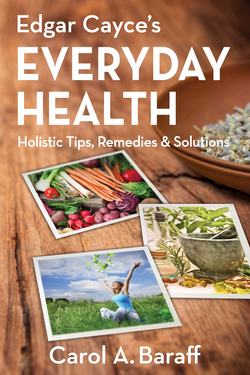Читать книгу Edgar Cayce's Everyday Health - Carol Ann Baraff - Страница 10
На сайте Литреса книга снята с продажи.
Chocolate, Coffee, and Hold the Latte
ОглавлениеWhen does something thought to be a health challenge become a health food? The short, skeptical answer is when it serves some group’s interests. But with Cayce, of course, there is no such pat answer. Here’s the scoop, and it won’t be the same flavor for everyone.
Chocolate, or Theobroma cacao, is a kind of bitter bean that is native to warm climates such as those found in Mexico and Central America. It contains theobromine, a caffeine-like stimulant that enhances mellow feelings. This mood altering effect has been highly valued by cultures such as the Aztecs, who were extremely fond of a peppery, unsweetened chocolate drink known as the food of the gods. Now, research is showing that this assessment may not be so far off.
Consider the findings of Joseph Vinson, a Pennsylvania chemistry professor, who says that cocoa powder is a better protective antioxidant food than either green tea or garlic. According to his analysis, a 40 gram bar of milk chocolate contains 300 mg. of polyphenols, dark chocolate twice that amount, and cocoa powder 1,200 mg. In another study, Vinson and Harold Schmitz, a chemist at M&M Mars, found that cocoa contains the same types of proanthocyanins found in Pycnogenol, a complex antioxidant matrix.10
In the Cayce readings, however, chocolate receives only moderate praise. Ovaltine, a fortified cereal drink containing cocoa, is proposed as an alternative to coffee or tea in several cases. Several more readings suggest cocoa itself as a beverage in small amounts. The ten or so references to chocolate itself are more ambiguous due to difficulties with overindulgence, cane sugar content, sugar and starch combinations, and digestibility. In other words, the ideal form would be free of starch and sugar and not overly sweet, so the Aztecs apparently got it right!
Coffee, or Coffea spp, is a rich, dark beverage made from a Middle Eastern bean that has been highly prized for centuries. The caffeine it contains (unless removed) seems to stimulate the dopamine pathway in the brain, leading to improved mood and alertness. Consumption is known to improve mental concentration, vigilance, and an overall sense that all is right with the world. According to studies by Vinson and others, coffee is also a top source of antioxidant polyphenols that can reduce oxidation of fats in the blood (a contributor to heart disease) by 30 percent.
The readings are perhaps unique in regarding coffee (or tea) as a nourishing food when taken black and a noxious digestive irritant when combined with milk or cream. In his twenty-five or more comments on this beverage, Cayce often observes that drinking coffee in moderation is beneficial, “. . . but for the food value and the proper strengthening the coffee should be taken without either cream or sugar.” (829-1) Further explanation is occasionally offered: “. . . While the food values in the milk or cream may be considered of an equal value alone, when used together they form a condition in the lactic juices of the stomach itself that does not make for the proper eliminations carried on through the whole of the alimentary canal.” (983-1)
There are those who feel that combining their coffee with some sort of dairy product (this goes for ice cream, too) is worth the intestinal toll, but we purists are not among them. We have learned to prefer ours black—but it isn’t too bad with almond milk!
